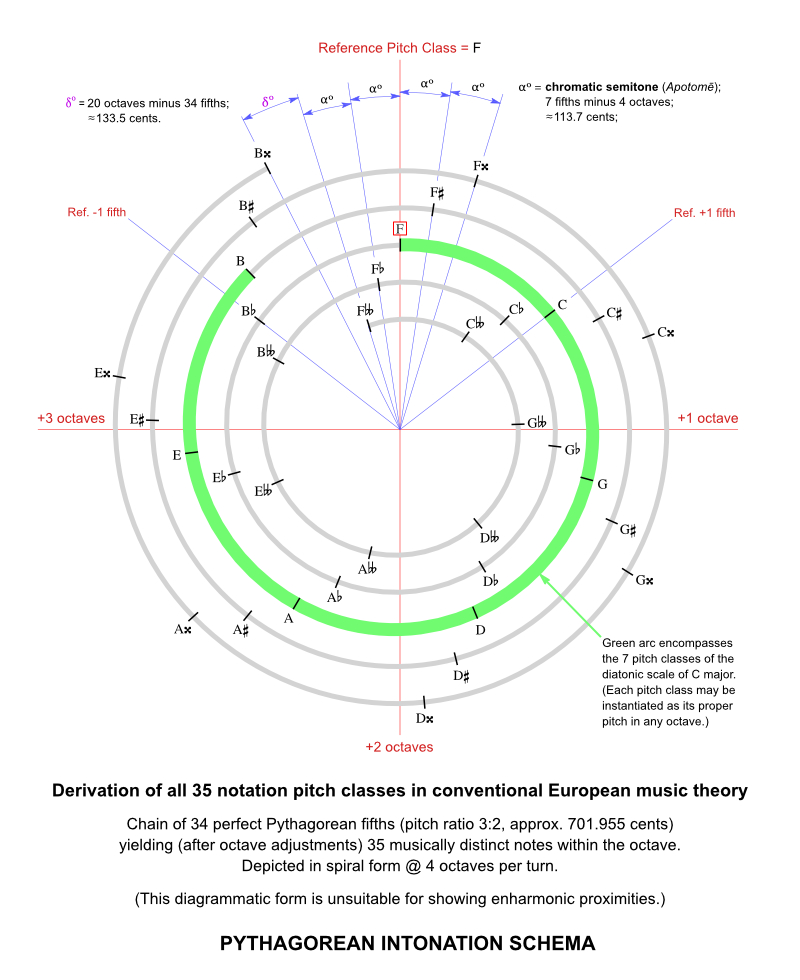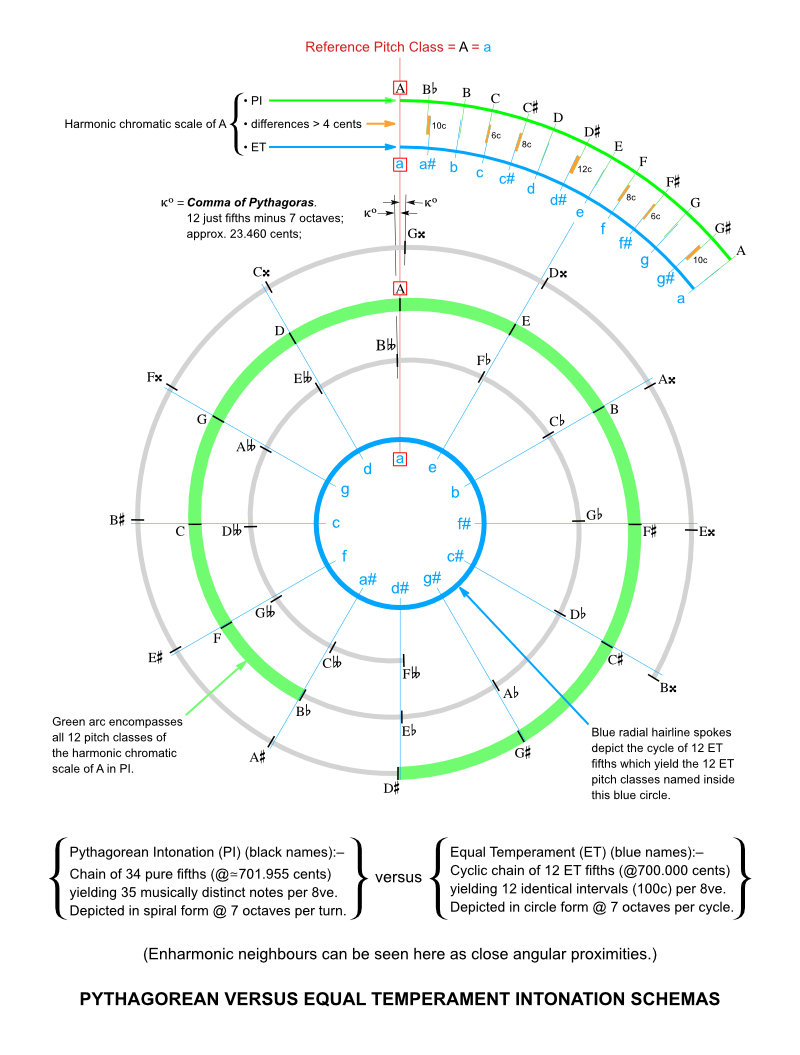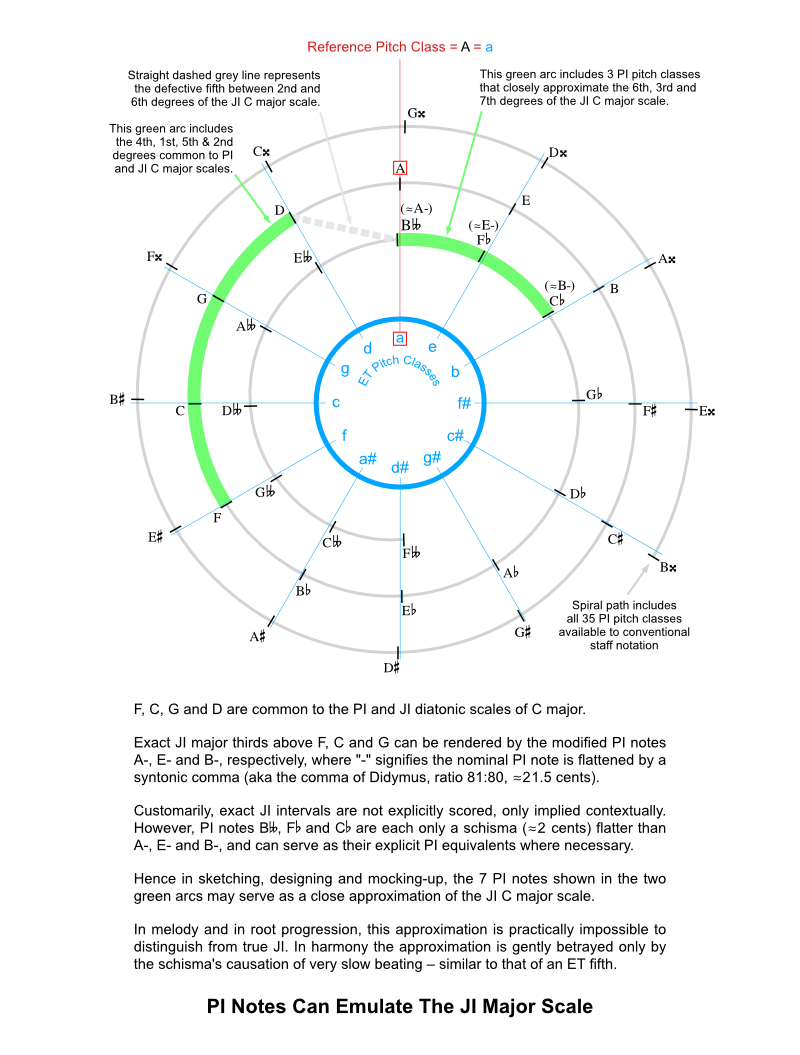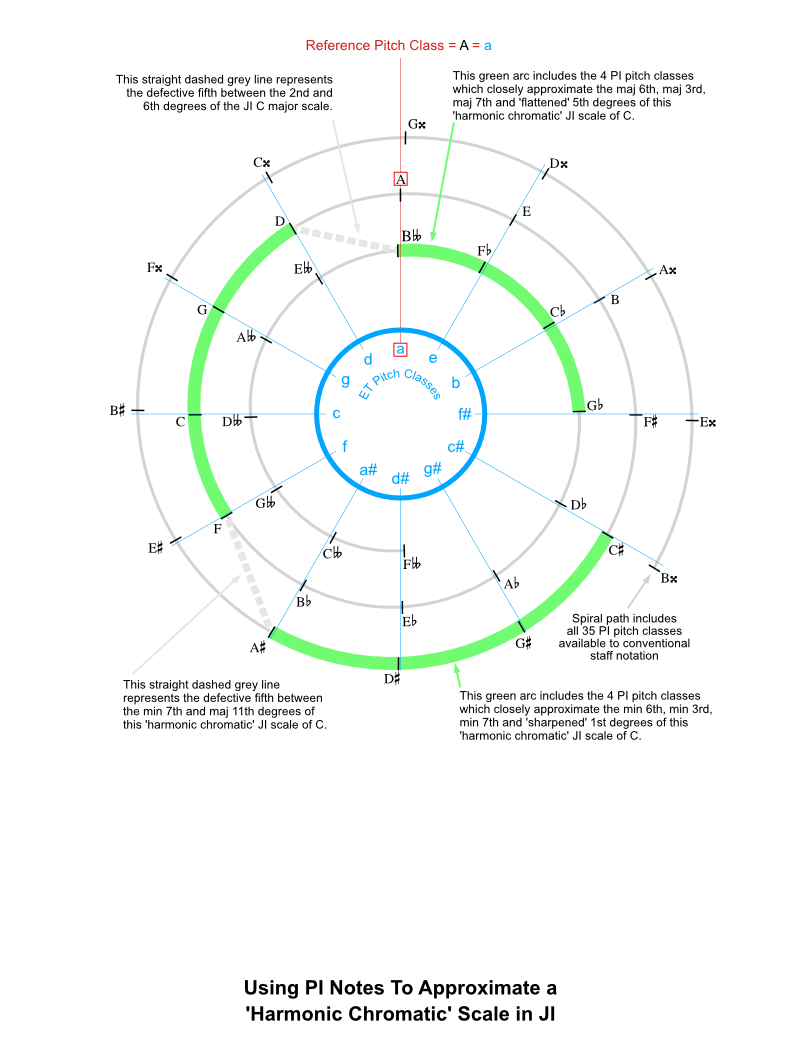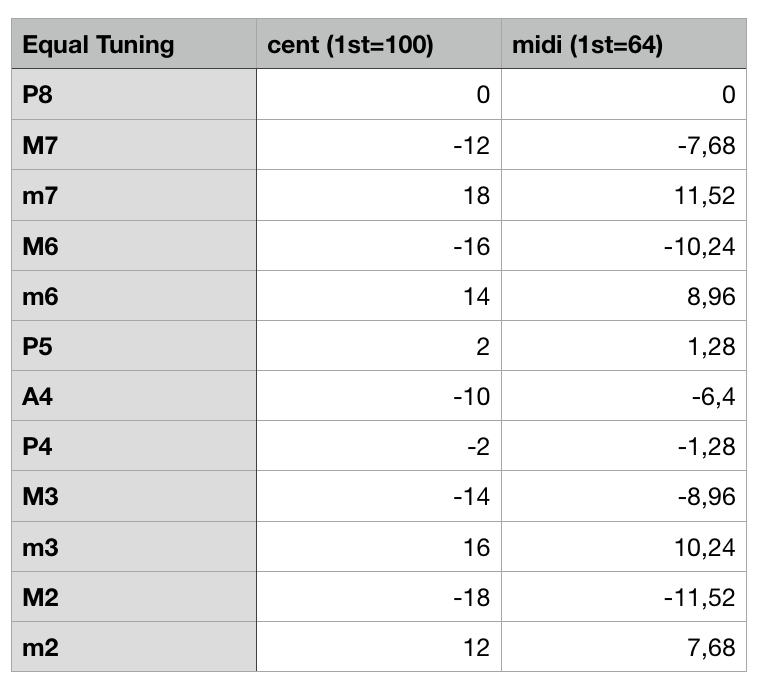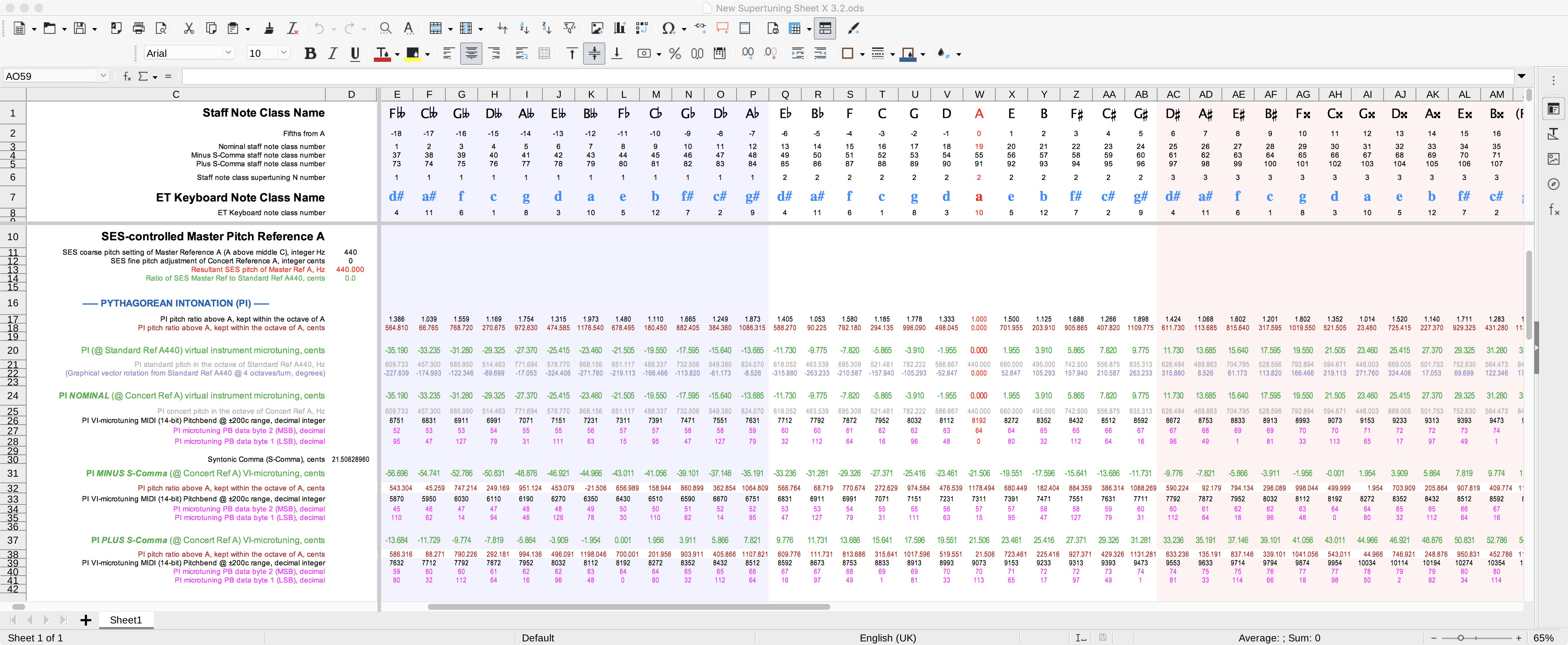That's an extremely good question, Paolo. I'll try to answer as concisely as I can here and now, but if you can wait a while (probably a matter of weeks), I'll have a document prepared that I hope will serve as a primer on orchestral intonation, and I'll post it (free) in this forum.
I already have a few diagrams ready that I'll let you have now in the hope they may help you.
A few points:-
1. As you know, conventional European music theory has for centuries adhered to the Pythagorean Intonation (PI) schema as far as staff notation is concerned. In practice, strings playing double-stops and brass (perhaps woodwind too) playing chords will adjust thirds and sixths to conform to Just Intonation (JI) intervals. But customarily these adjustments are never notated explicitly in the score - conventional staff notation never deviates from pure PI.
As far as we know there never has been any established technique of scoring in JI, which has led some scholars to refute the very idea that JI has ever been used as an intonation schema in its own right. For example, see what these music historians have to say about it in this excellent YT video discourse.
Be that as it may, it doesn't preclude the use of JI intervals here and there where required to sweeten the polyphonic rendition of orchestral instruments. But that stands in fundamental contrast to what several theorists, from Ramos (1482) through to the present day have advocated, i.e. that JI scales ought to be regarded as the basis of an entire intonation schema and should be used for whole pieces of music.
2. Whatever. But the problem here and now is, how do we 'digital emulationists' accurately mimic the playing of actual instrumentalists who make these small but crucial tuning adjustments in their renditions as part and parcel of their normal playing in orchestras? The answer is: with great difficulty, until I release my Situator Environment Subsystem which sits behind the scenes in Logic Pro X doing all the tricky PI and JI stuff for you. But alas, I'm still battling to get the damn thing into its final shape and fit for public release. It's still months away and I - already retired - am not getting any younger.
3. In the meantime, I could perhaps suggest that (if you're into some gruelling arithmetic and tricky technical jiggery-pokery) you could apply MIDI Pitchbend messages to accompany the notes that need these momentary tuning adjustments. (In fact Situator does this for every note - each MIDI Note On triggers a Pitchbend "consort" to accompany the note.) But then you'd still have the problem that all the other notes are still in ET and may or may not be close to the pitch they'd have in PI even without JI adjustments. A bit of a nightmare all round to accomplish on a quick-fix, ad hoc basis, so really, in all good faith, I'd not recommend going down that path.
4. There is a half-way solution already as a standard feature in Logic Pro X, called Hermode tuning. This facility automatically detects when a third or sixth in a chord is present and will adjust the tuning to make those intervals just. It's a clever system but its fundamental flaw is that it uses ET as the basic intonation matrix, so it's sort of a case of 2 steps forward and 1.5 steps backwards.
5. To answer your question more precisely, when brass players encounter in their part, say, a major third of a chord being played by their section, they'll flatten the notated PI pitch by a syntonic comma (about 21.5 cents); thus rendering a beautifully clear and stable just major third within the chord. Or, for a minor third they'll sharpen the notated pitch by a syntonic comma. Overall it's these syntonic comma shifts away from the PI score which do the business and make brass ensembles sound so engagingly clear, positive and sonorous when playing polyphonically. When played in PI only, strictly according to the score, brass chords sound about as rough and unstable as chords played in ET.
6. There is, however, a very useful property of PI (and this is what Situator used for years until recently). To render, say, the chord of C major using only notes within the gamut of the PI schema yet still making a sonorous major third, it can be played as C, Fb, G. This third given by Fb is within about 2 cents of the just third (it's a Pythagorean comma shift, about 23.4c, instead of the required syntonic comma, about 21.5c) and in practice can be extremely difficult to distinguish from exact JI. Therefore if, using .tun microtuning files in VSL VI Pro players, you can provide and organise all the PI notes necessary to play your piece, and then if you also make available those enharmonic PI notes that would closely approximate syntonic comma shifts wherever required, you'd have a reasonably good intonation system. However (as William will probably attest because he's tried it) this is not a straighforward or easy task.
So in conclusion, I wish I could spell out for you a neat and practical method of sweetening your polyphonic brass. But alas, I can't - except to say hang in there, Situator is coming to the rescue .... eventually .... but only if you're ok with using Logic Pro X.
